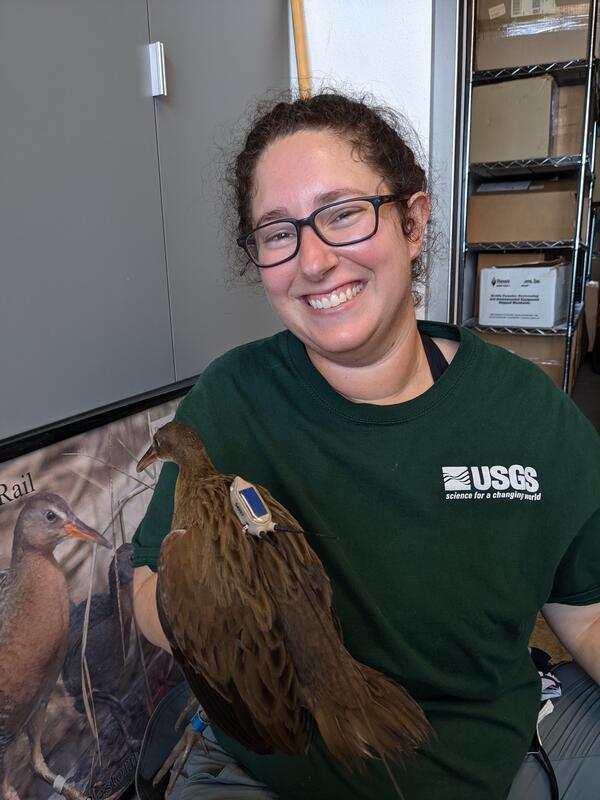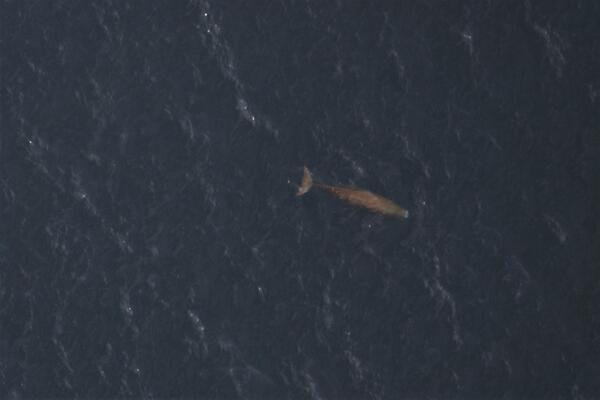Sunset over the lagoon at Palmyra Atoll.
Learn more about research at Palmyra Atoll:
https://www.usgs.gov/centers/werc/science/palmyra-blue-water-research

An official website of the United States government
Here's how you know
Official websites use .gov
A .gov website belongs to an official government organization in the United States.
Secure .gov websites use HTTPS
A lock () or https:// means you’ve safely connected to the .gov website. Share sensitive information only on official, secure websites.
Sunset over the lagoon at Palmyra Atoll.
Learn more about research at Palmyra Atoll:
https://www.usgs.gov/centers/werc/science/palmyra-blue-water-research
Sunset over the lagoon at Palmyra Atoll.
Learn more about research at Palmyra Atoll:
https://www.usgs.gov/centers/werc/science/palmyra-blue-water-research

Successfully hatched greater sage-grouse (Centrocercus urophasianus) nest in southeastern Oregon.
Successfully hatched greater sage-grouse (Centrocercus urophasianus) nest in southeastern Oregon.
A patch of short moss photographed in the Great Basin.
Biological soil crusts are an intimate association of soil particles, cyanobacteria, algae, lichens, bryophytes, and microfungi which live within or directly on top of the uppermost millimeters of soil. (Belnap, 2003)
Reference:
A patch of short moss photographed in the Great Basin.
Biological soil crusts are an intimate association of soil particles, cyanobacteria, algae, lichens, bryophytes, and microfungi which live within or directly on top of the uppermost millimeters of soil. (Belnap, 2003)
Reference:

A male greater sage-grouse (Centrocercus urophasianus) displaying on a lek in the Bodie Hills, California.
A male greater sage-grouse (Centrocercus urophasianus) displaying on a lek in the Bodie Hills, California.

Amy Vandergast (left) and Julia Smith (right) pose next to a rail crossing sign in Ventura County.
Amy Vandergast (left) and Julia Smith (right) pose next to a rail crossing sign in Ventura County.

Locations of GPS-GSM tracked cinnamon teal between April 2017 and August 2021.
Since 2017, USGS scientists have tagged more than 200 cinnamon teal with lightweight, solar-powered GPS-GSM transmitters, which the ducks wear like backpacks. The GPS transmitters produce near real-time data on where the birds go and what kinds of habitats they use.
Locations of GPS-GSM tracked cinnamon teal between April 2017 and August 2021.
Since 2017, USGS scientists have tagged more than 200 cinnamon teal with lightweight, solar-powered GPS-GSM transmitters, which the ducks wear like backpacks. The GPS transmitters produce near real-time data on where the birds go and what kinds of habitats they use.
Triple-high mist net in front of Half Dome. The net is used to capture bats as part of a study tracking bat movements in Yosemite National Park.
Triple-high mist net in front of Half Dome. The net is used to capture bats as part of a study tracking bat movements in Yosemite National Park.
A California myotis with a transmitter, part of a study of bats in Yosemite National Park.
A California myotis with a transmitter, part of a study of bats in Yosemite National Park.
Ruby Lake National Wildlife Refuge lies at the southern end of Ruby Valley in northeast Nevada. For more information visit the Ruby Lake NWR website.
Ruby Lake National Wildlife Refuge lies at the southern end of Ruby Valley in northeast Nevada. For more information visit the Ruby Lake NWR website.
To adapt to rising sea levels, coastal wetlands can migrate landward at the expense of adjacent freshwater wetlands and upland ecosystems, but migration can be hindered by natural and anthropogenic barriers. This photo shows marsh migration constrained by topographic and urban barriers in southern California.
To adapt to rising sea levels, coastal wetlands can migrate landward at the expense of adjacent freshwater wetlands and upland ecosystems, but migration can be hindered by natural and anthropogenic barriers. This photo shows marsh migration constrained by topographic and urban barriers in southern California.

Five tule white-fronted geese flying over Summer Lake Wildlife Area, the primary stopover site for this species on its fall migration.
Five tule white-fronted geese flying over Summer Lake Wildlife Area, the primary stopover site for this species on its fall migration.

Six tule white-fronted geese flying over Summer Lake Wildlife Area, the primary stopover site for this species on its fall migration.
Six tule white-fronted geese flying over Summer Lake Wildlife Area, the primary stopover site for this species on its fall migration.

Tule white-fronted geese get ready to land at Summer Lake Wildlife Area in Oregon. The geese turn upside down and sideways to drop altitude quickly to land, a behavior known as "whiffling" or "maple leafing."
Tule white-fronted geese get ready to land at Summer Lake Wildlife Area in Oregon. The geese turn upside down and sideways to drop altitude quickly to land, a behavior known as "whiffling" or "maple leafing."

Five tule white-fronted geese take off from Summer Lake Wildlife Area, the primary stopover site for this species on its fall migration.
Five tule white-fronted geese take off from Summer Lake Wildlife Area, the primary stopover site for this species on its fall migration.
Once thought to be extinct, the Pacific pocket mouse (Perognathus longimembris pacificus) was rediscovered in 1993 and is currently found at three population sites along the southern California coast.
Once thought to be extinct, the Pacific pocket mouse (Perognathus longimembris pacificus) was rediscovered in 1993 and is currently found at three population sites along the southern California coast.

Julia Smith holds a captive rail fitted with a transmitter "backpack" before release into Tijuana Estuary.
Julia Smith holds a captive rail fitted with a transmitter "backpack" before release into Tijuana Estuary.
The light-footed Ridgway’s rail, a handsome but secretive waterbird that lives on tidal marshland fragments in southern California from Santa Barbara County south to Baja California, Mexico.
USGS is gathering and analyzing DNA from blood samples throughout the subspecies’ range to document the light-footed Ridgway’s rail’s genetic health.
The light-footed Ridgway’s rail, a handsome but secretive waterbird that lives on tidal marshland fragments in southern California from Santa Barbara County south to Baja California, Mexico.
USGS is gathering and analyzing DNA from blood samples throughout the subspecies’ range to document the light-footed Ridgway’s rail’s genetic health.
Close up of light-footed Ridgway's rail.
Close up of light-footed Ridgway's rail.
A wild rail approaches a speaker playing mating calls at San Elijo lagoon. The light-footed Ridgway’s rail is a handsome but secretive waterbird that lives on tidal marshland fragments in southern California from Santa Barbara County south to Baja California, Mexico.
A wild rail approaches a speaker playing mating calls at San Elijo lagoon. The light-footed Ridgway’s rail is a handsome but secretive waterbird that lives on tidal marshland fragments in southern California from Santa Barbara County south to Baja California, Mexico.

Zoomed image of a Sperm Whale (Physeter macrocephalus) below the surface, with contrast increased for clarity.
Zoomed image of a Sperm Whale (Physeter macrocephalus) below the surface, with contrast increased for clarity.

Zoomed image of a Fin Whale (Balaenoptera physalus) breaking the surface.
Zoomed image of a Fin Whale (Balaenoptera physalus) breaking the surface.
